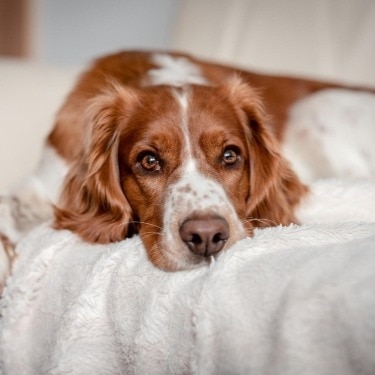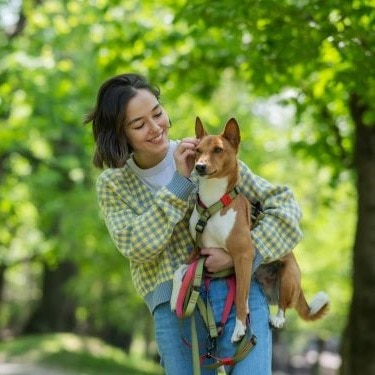
-
Find the right food for your petTake this quiz to see which food may be the best for your furry friend.Find the right food for your petTake this quiz to see which food may be the best for your furry friend.Featured products
 Adult Large Breed Chicken & Barley Recipe Dog Food
Adult Large Breed Chicken & Barley Recipe Dog FoodSupports healthy joints, lean muscle, and beautiful coat for large breed dogs
Shop Now Adult Chicken & Barley Recipe Dog Food
Adult Chicken & Barley Recipe Dog FoodSupports lean muscle and beautiful coat for adult dogs
Shop Now Hill's Science Diet Adult Chicken & Beef Entrée Dog Food
Hill's Science Diet Adult Chicken & Beef Entrée Dog FoodChicken & Beef Entrée in a delicious loaf with complete & balanced nutrition to help keep adult dogs active and healthy
Shop NowFeatured products Senior Vitality Adult 7+ Tuna & Vegetables Stew
Senior Vitality Adult 7+ Tuna & Vegetables StewImproves Everyday Ability to Get Up & Go
Shop Now Adult Tender No Corn, Wheat, Soy Chicken & Vegetables Stew Cat FoodShop Now
Adult Tender No Corn, Wheat, Soy Chicken & Vegetables Stew Cat FoodShop Now Adult Turkey & Liver Entrée Cat Food
Adult Turkey & Liver Entrée Cat FoodPrecisely balanced nutrition with the delicious taste of minced turkey & liver to help fuel the energy needs of cats during the prime of their life
Shop Now -
Dog
- Dog Tips & Articles
-
Health Category
- Weight
- Food & Environmental Sensitivities
- Urinary
- Digestive
- Joint
- Kidney
-
Life Stage
- Puppy Nutrition
- Adult Nutrition
- Senior Nutrition
Cat- Cat Tips & Articles
-
Health Category
- Weight
- Skin & Food Sensitivities
- Urinary
- Digestive
- Kidney
-
Life Stage
- Kitten Nutrition
- Adult Nutrition
Featured articles How to Properly Mix Wet & Dry Pet Foods
How to Properly Mix Wet & Dry Pet FoodsAn Orange cat eating from a bowl filled with mixed food
Read More What Is Littermate Syndrome? Pet Adoption Guide
What Is Littermate Syndrome? Pet Adoption GuideLearn more about littermate syndrome in dogs and cats and how to successfully navigate adoption and early socialization processes.
Read More The Science Behind Our Love for Pets
The Science Behind Our Love for PetsLearn the scientific reasons why we have such strong connections with our pets, and what science says about the love between humans and our furry friends.
Read More -


Many pet parents dread giving their dog a bath, especially if they're new to pet parenting. With the right dog-washing supplies, however, bath time can be a rewarding experience for both of you. Here's a handy checklist of things to have when washing your dog at home.
Supply Bucket
A supply bucket serves two purposes: First, it gives you a place to keep your supplies for quick and easy access in case your dog gets into a muddy mess outside. And second, you can fill the bucket with clean, warm rinse water if you don't have access to a sprayer–which can be harsh on small dogs and make it difficult to contain the water in the tub (assuming you're inside).
Brush or Comb
If your dog is dirty from an outing, you may need to skip this part and get right to the grooming. If it's a routine bath, comb or brush your dog before bathing to remove excess hair and check for fleas and ticks.
Tub
Whether you decide to use your bathtub, an outdoor tub, or go to a dog-washing station, be sure to choose a tub that gives your dog some room to move around–but not too much. You want to be sure the tub affords you comfort and control while washing him. Many online pet stores offer unique tubs made specifically for bathing dogs at home.

These are perfect for older dogs or large breeds because most tub options allow him to walk into the tub, instead of jump in with a splash. The tub can easily connect to an existing water supply and be used inside or outside. For smaller dogs, or those that get dirty while out and about, consider taking your supply bucket to a dog-washing station; more and more of these are popping up next to self-serve car washes.
Plastic Hair Trap
These awesome items allow water to empty down the drain without hair or fur going with it. By trapping it for easy removal, you avoid clogged drains! Be sure to get one that properly fits the type of drain you have in your tub. Plastic may be easier to extract dog hair from than metal, depending on the hair's thickness.
Sprayer
This isn't a crucial item for home dog-washing supplies, but it can make bathing way more enjoyable. Be sure to find one that is long and can make it around your dog to rinse all areas thoroughly. In this case, sprayers are especially nice for the under-the-tail and back-leg areas, where soap can sometimes sit unrinsed and lead to dry skin.


Tasty Tips
Soap
If your dog has sensitive skin, be sure to stick with an all-natural dog shampoo that's free of dyes and perfumes. Some pups with dry skin issues do well with honey and oatmeal shampoos. If you're feeling a little adventurous, according to PetHelpful, you can make your own dog shampoo using simple ingredients you may already have at home. Honey, oats, rosemary, and baking soda are just a few of the simple items you can use to make a dog shampoo that is safe and soothing at the same time.
Towel
Having a few old towels nearby during bath time can make cleanup much easier. You'll place towels on the floor, but have one or two within quick reach of the tub as well, so when your dog gets out you can absorb as much water as possible. Keep in mind dogs love to shake after being in water, so it's okay to hold the towel in front of you as a splash guard while your dog does some after-bath drying.
Oils
After you've dried off your dog with a towel, consider some essential oils to help your dog smell nice and prevent pests from climbing back on. Geranium rose oil repels ticks and lemongrass, whereas Pet360 suggests peppermint can repel fleas systemically. You should apply just a few drops along their back, and only use on dogs more than a year old.
Once you have all the proper dog-washing supplies for washing your dog at home, be patient with him the first few times. It's also a good idea to give your dog a treat after bath time to reward him for his patience. Eventually, you'll establish a bath time routine that becomes a great bonding opportunity for both of you.


Chrissie Klinger is an educator, writer and mother of two children, three dogs and three cats. Her dog Jake loves sitting on her lap every chance he gets! She enjoys living an active and eco-friendly lifestyle in rural Pennsylvania.
Related products

Chicken & Beef Entrée in a delicious loaf with complete & balanced nutrition to help keep adult dogs active and healthy

Supports healthy joints, lean muscle, and beautiful coat for large breed dogs

Chicken & Barley Entrée in a delicious loaf with great taste and precisely balanced nutrition to support 5 essential building blocks for lifelong health

Supports lean muscle and beautiful coat for adult dogs
Related articles

Learn how to help keep your dog's immune system in tip-top shape, including nutritional immune system support for dogs and other strategies.

Your dog's coat and skin are a big part of your dog's overall health. Ensure you keep your dog's coat healthy, by following these simple tips.

Discover how the field of dog science is giving us more and more insights into the inner workings of our furry best friends.

Wondering where can I buy a dog? Consider adoption and explore the pros and cons of adopting a dog from a breeder versus an animal shelter.

Put your dog on a diet without them knowing
Our low calorie formula helps you control your dog's weight. It's packed with high-quality protein for building lean muscles, and made with purposeful ingredients for a flavorful, nutritious meal. Clinically proven antioxidants, Vitamin C+E, help promote a healthy immune system.
Put your dog on a diet without them knowing
Our low calorie formula helps you control your dog's weight. It's packed with high-quality protein for building lean muscles, and made with purposeful ingredients for a flavorful, nutritious meal. Clinically proven antioxidants, Vitamin C+E, help promote a healthy immune system.

